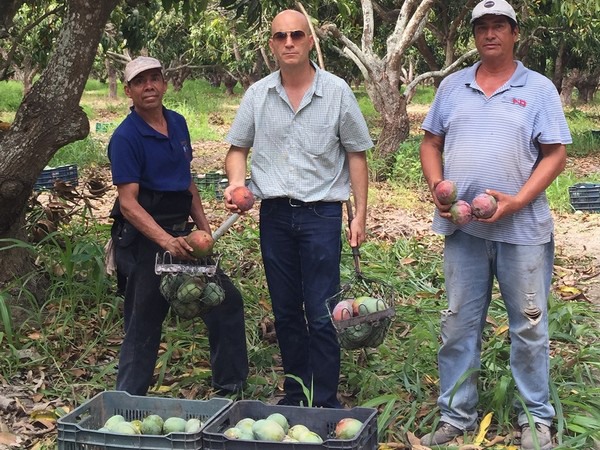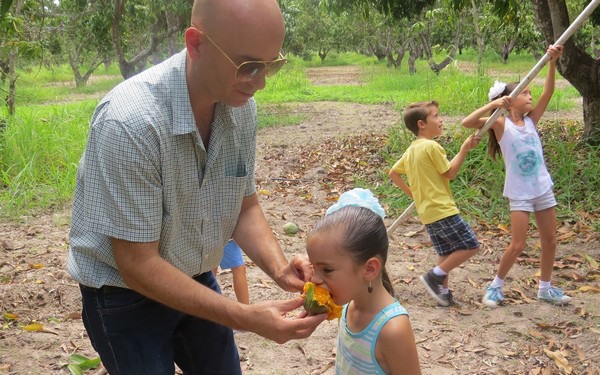International logistics continue to challenge shippers and importers and, like many commodities, mangoes are also being affected.
“Supplies of mangoes overall are a bit lower due to container and ocean liner uncertainties. There’s a lack of certainty getting vessels and confirming shipments so it’s been a bit harder this season,” says Rodrigo Diaz of Rio Rico, AZ-based Diazteca. He adds that shipping by truck also continues to be affected. “The lack of sufficient truck drivers is causing the freight to go higher in price by 10-25 percent.”
 Rodrigo Diaz (middle) and team during mango harvest.
Rodrigo Diaz (middle) and team during mango harvest.
Currently, mango imports are largely coming from Brazil who is supplying red Tommy Atkins and Ataulfo mangoes. Puerto Rico is also supplying the market, largely going through the Philadelphia and Miami ports of entry, and are shipping Keitts mainly in size 9s and 10s.
And at the end of its season, some mango supplies are still coming from Mexico through McAllen, TX or Nogales, AZ. “There’s mixed quality coming out of Mexico because some regions had more rain than other regions. You can see clean fruit from Mexico but there’s also mixed quality,” says Diaz.
Next growing region
Also around the corner will be Ecuador supplying and that begins next month.
As far as demand goes, Diaz says that fall consumption of mangoes tends to rely more on supply than demand. “The supplies are usually from Brazil and they’re at their lowest import volume of the year,” he says, noting though that consumption of mangoes continues increasing though at both retail and foodservice annually.
 Diaz and his children having fun in a mango grove.
Diaz and his children having fun in a mango grove.
As for pricing, Brazilian and Puerto Rican imports are generally around $6.25 compared to pricing on Mexican mangoes, which is averaging $4.75. “Based on supply--and we hear Brazil is coming on with approximately 10 percent higher volume thanks to good weather conditions--Brazilian prices are at $6.25 and in other years pricing started at $9. Based on the higher supply we should see prices dropping in the next three to four weeks,” says Diaz.
 For more information:
For more information:
Rodrigo Diaz
Diazteca
Tel: +1 (520) 281-4281
rdiaz@diazteca.com
https://www.diazteca.com/
